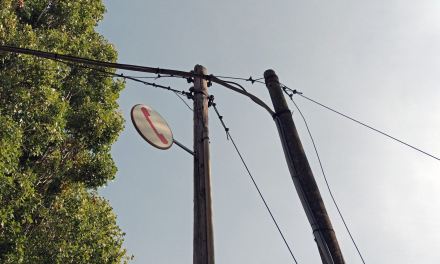Contributed Article
Analysis by Xtera’s Chief Operating & Sales Officer, Leigh Frame (human)
Artificial Intelligence (AI) has become a major disruptor, sparking stock market excitement, corporate collaborations, and infrastructure advancement. The growing enthusiasm for AI, exemplified by models like ChatGPT, has driven companies such as Nvidia to frothy valuations (bigger than Alphabet or Amazon?) and spurred partnerships between tech giants and AI startups. However, amidst this fizzing excitement lies a profound transformation silently unfolding within the corridors of data centres and the depths of subsea cables.
AI’s dual facets, Training and Inference, create divergent demands on data centre architecture. The high demand for computing power in Training AI has led to an increase in power-dense servers. This trend requires data centres to be located where there is ample energy and cooling resources available. On the other hand, Inference AI, which relies on low latency for the user experience, tends to be located in urban areas to serve proximity-driven applications. These drivers have resulted in a divergence of data centre locations, increasing the need for connectivity between terrestrial and subsea networks.
Industry titans such as Amazon and Google envision dedicated data centres tailored to accommodate the colossal computational demands of AI training, heralding a new era characterised by unprecedented scale. But AI’s impact on data centres goes beyond just spatial factors; it is leading to a significant change in infrastructure design. The shift from air to liquid cooling, demonstrated by Nvidia’s AI racks with power densities of 30-40kW, highlights the necessity for specialised AI facilities.
Data centres are at the core of AI’s predicted proliferation, with forecasts of exponential growth in power consumption and operational expenditures. Analysts foresee a sevenfold surge in AI-related power consumption by 2026, heralding a lucrative $12 billion revenue opportunity for data centre operators. Equinix has reportedly earmarked a $21 billion addressable market for AI-centric data centre services by 2026, propelling a seismic shift in revenues. Tirias Research predicts a substantial 212-fold increase in data centre power consumption by 2028, driving the industry’s value to an estimated $76 billion.
Amidst these growing trends, forecasts consistently show strong Compound Annual Growth Rates (CAGR) for the data centre market, largely driven by the rise of AI. However, there’s a lack of thorough analysis focusing on AI’s impact, which clouds the true extent of its influence on infrastructure. AI’s rapid growth also coincides with various supply-side challenges, including power, land, and chip shortages. These uncertainties loom over the industry’s future and raise questions about the industry’s ability to maintain its projected growth trajectory amidst mounting obstacles.
I am, like all of us in the subsea community, closely watching the uptake and influence of AI, and trying to relate it back to our space. What is currently all-but impossible to estimate (and it seems there are no public forecasts for this) is the likely growth in demand for international connectivity and in the subsea market, that will be generated by the possibly dramatic evolution of AI. The difficulty comes in building a model – even a qualitative one – that considers the interplay and the relationship between these various factors and, even more difficult, tries to ascribe a figure to any of them:
- The overall growth in the data centre market.
- The accelerating growth in AI as a proportion of the workload of a hyperscaler data centre, or the impact of inference AI on data centres at the lower tiers.
- The potential growth vs possibly constrained growth.
- The effect of the algorithms and operating models that determine how data and processing is shared or duplicated between data centres nationally and internationally.
- The changing pattern of data centre locations – due to i) concerns over sovereignty of data, ii) shifting patterns of AI and the other data centre workloads, and iii) endeavours to circumvent anticipated supply-side issues related to power, for example.
- The almost completely unknown conversion factor between a given data centre capacity (usually expressed as a function of MWatts power consumption) and bandwidth capacity on any given route, expressed as Tbits.
- The conversion factor from a known demand of Tbits on a given route into cable capacity needed and number of cables needed, taking into account meshing or redundancy policies, latency demands, insistence on owned and controlled infrastructure, etc.
However, given that the hyperscalers control or strongly influence a figure probably in excess of 80% of the current subsea market (a historic high), it is fair to assume that the impact of AI will, in the upside case, create a likely material step-up in demand for long-haul subsea cables or at the very least, in the conservative scenario, a sustained period of historic highs in global demand at or around the current level.
The most bullish commentators suggest that the step-up in build of subsea cables generated by AI could itself be dramatic, but the effect of the demand growth is more likely to be seen in a firming up of prices and margins in the short to medium term, given that the subsea cable industry is also supply-side constrained with long lead times on ships and cable factories and regulatory issues that are increasingly creating obstacles to fast deployments.
What next?
As AI continues to grow, its impact on data centres, bandwidth, and subsea cables will become increasingly pronounced and, with AI’s high demand for computational resources, it will for sure change how infrastructure operates. Yet, in trying to strategise or quantify a future for the subsea industry and for our businesses we are navigating a landscape littered with uncertainties and, worse, those irritating unknown unknowns. So, conclusions around future subsea demand are tricky, even if a trend is perhaps clear.
But don’t take my word for it… I prodded and coaxed ChatGPT for an answer, and I quote: “While it’s challenging to provide precise quantitative figures, it’s evident that AI will contribute to a significant increase in the demand for subsea cables.”
This could yet be a wild ride!
You can join Xtera at Submarine Networks EMEA coference next week! Get your tickets now
















